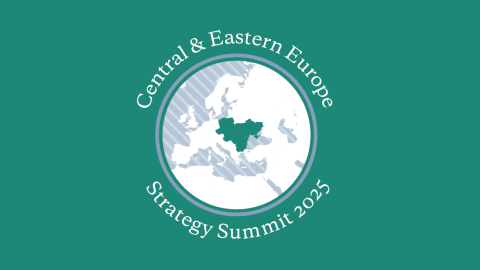Members of the restraint camp in U.S. foreign policy decry what they see as an ongoing waste of resources on overseas commitments. Notwithstanding differences over withdrawing U.S. military assistance to the Kurds in northern Syria, both the administration of U.S. President Donald Trump and the front-runners for the Democratic presidential nomination agree on ending “endless wars”—which is code for narrowing the scope of all U.S. engagement abroad, particularly in the Middle East. With the Islamic State mostly defeated and the threat of terrorism on the decline, the thinking goes, the United States no longer needs an active presence in the region.
While some strategically minded thinkers, such as Andrew Bacevich, advocate redeploying U.S. assets in the Middle East to the Pacific, as opposed to the comprehensive retreat their more isolationist counterparts espouse, the general message remains the same: That there is no longer much value in securing geographically strategic points in the Middle East, and that U.S. security does not depend on it. This perspective is mistaken. Foreign Policy’s Dec. 13 article “ RIP the Carter Doctrine ” is correct that a stable Persian Gulf benefits the United States indirectly, by safeguarding a global economic and security interest in the steady supply of Middle East energy. In a parallel but opposite direction, an unstable Middle East benefits Russia’s interest in higher energy costs.
Debates about U.S. foreign policy usually avoid grand strategy—the notion of a high-level international relations framework. But great powers that do not think strategically will cease to be great powers.
Since functionally unifying the North American continent and establishing its hegemony in Latin America in the late 19th century, the United States’ central geopolitical objective has been to prevent any one state from dominating Eurasia, and a look at the nature of the country’s global position explains why. Its involvement in both of the 20th century’s world wars and the Cold War was motivated in large measure to prevent a hegemonic power from dominating Europe.
The economic element of today’s competition with China is subordinate to the strategic objective of keeping it from controlling the Eurasian landmass. Geographically isolated from the world’s traditional sources of wealth in Europe and Asia, the United States relied on maritime trade and transport for its economic power, which, in turn, requires access to overseas markets—access a Eurasian great power could hypothetically deny. Moreover, a single political force that commands Eurasia’s population of 5 billion could apply enormous economic, social, and political pressure on smaller and less powerful states in Africa and the Americas.
For those reasons, the United States has built a global defense system buttressed by a sprawling network of military bases in order to guarantee access to large parts of Eurasia. Considering the United States’ insular geographic position, naval power is the key to ensuring Washington’s ability to move forces between regions at will, to ensure communications with its allies, and to deny options to its enemies.
The Middle East’s central location between Europe, East Asia, and Africa makes it geographically vital to U.S. interests. The rise of China had not changed that. U.S. lines of communication and supply between Europe and Asia pass directly through the Middle East. U.S. maritime strategy requires sailing carrier and expeditionary strike groups, submarines, and logistic ships between combatant commands, and passing through the Suez Canal is far more efficient than rounding the Horn of Africa.
Although the United States has decreased its reliance on Middle Eastern oil—a fact motivating some of the isolationist rationale for disengagement—Washington’s European and Asian allies still require uninterrupted access to the region’s energy resources. The Levantine Basin and Suez Canal are also international container shipping hubs. Disruption to that regional maritime trade would have immediate, far-reaching global implications.
The Ottoman Empire was the last entity to command regional hegemony in the Middle East. No country or group has made a legitimate claim to the mantle of a regional caliphate since. While a united Middle East under any version of a reconstituted caliphate could undermine U.S. interests by projecting power globally, a divided Middle East monopolized by a hostile great power could have the same effect. Either an external power or a regional hegemon could prevent the United States from communicating and coordinating among forces and allies in Europe and Asia and disrupt global economic activity by interrupting U.S. and allied shipping. Eliminating U.S. naval dominance would upend the current balance of power, with severe consequences for Europe and Asia.
The pursuit of this mantle in the 21st century has only one true aspirational contender: Iran. But Tehran lacks the resources to conquer the Middle East, and its Shiite character would inflame old sectarian enmities in an explicit imperial campaign. For that reason, Iran’s strategy involves expanding its influence through proxies supported by well-placed special operations forces in an attempt to wear down Saudi and Israeli strength.
Israel and Saudi Arabia are the two main challengers to Iran’s ambitions. The Israeli Defense Forces are the only military in the region of Western quality and proficiency. Israel likely operates a secure nuclear second-strike capability, and its foreign intelligence service, Mossad, is one of the world’s best. While Saudi Arabia’s armed forces are of lesser quality, the kingdom has been remarkably adept at cultivating support from Sunni radical groups—necessitated by the United States’ strategic neglect of the region after 2008. And despite questions about its legitimacy, the House of Saud remains custodian of Islam’s two holy cities, Mecca and Medina, a position of great religious and political importance.
Nevertheless, neither Israel nor Saudi Arabia can contend for the title of regional hegemon. Moreover, despite its military superiority, Israel does not have the capability or requisite political will. The House of Saud may have considered itself the ruling dynasty of a new caliphate at some point, but contemporary Saudi Arabia has no such delusions. The government understands that oil revenues determine its survival, and an imperial campaign would overstretch the Saudi economy, possibly leading to economic collapse and, worse, revolt. Both Israel and Saudi Arabia operate on the defensive.
Turkey is a spoiler in this strategic balance. Turkish President Recep Tayyip Erdogan has unmistakably neo-Ottoman objectives, but the Turkish Armed Forces are unprepared militarily for the potential confrontation with Iran and Russia that their Syrian offensive could prompt. In the coming years, Ankara will remain a wild card, and the political stance it takes will profoundly influence the strategic landscape. Its position on Iranian expansion is unclear, and even if its current offensive puts it at odds with Syrian President Bashar al-Assad’s regime—and by extension with Iran—Erdogan may well forego cooperation with the unofficial Saudi-Israeli entente.
But the United States must also contend with its two greatest geopolitical threats, Russia and China—both of which have interests in the Middle East. China, dependent on Middle Eastern energy, seeks to assure its energy supply, complete the midsection of its Belt and Road Initiative, and place at risk the European ports on which the United States would depend in a continental war. China’s objectives challenge Washington’s interest in its NATO and East Asian allies’ need for energy, along with the United States’ long-standing relationship with the continent most closely allied to its political, economic, and security interests. China’s growing control of Mediterranean and European port infrastructure will complicate logistics associated with a U.S. response in the region.
Russia has made serious progress toward fulfilling its Middle Eastern strategic objectives of maintaining a decisive hand in the region’s politics, a year-round ice-free port, and a portal through which to influence events beyond the eastern Mediterranean. Russian President Vladimir Putin has no desire to imperialize the Middle East in a manner akin to the Russian Empire’s conquest of Central Asia in the 19th century. Having obtained air and naval bases at Khmeimim and Tartus, both in Syria, Russia can once again turn its focus toward Europe. Still, the Kremlin likely prefers whatever political arrangement will most quickly secure its position as the Middle East’s predominant power, even if that puts it at odds with its erstwhile Iranian ally.
Nonstate forces will continue to play a crucial role in the strategic balance. The Kurds are arguably the most relevant of these, because of their highly disruptive presence in Turkish, Iraqi, Iranian, and Syrian national politics and, additionally, because their transnational character gives them the ability to stoke interstate conflict. Iran’s significance will, as a result of its economic woes, likely continue to decline, but the political vacuum it helped create in Iraq and Syria will persist, giving Russia and especially Iran the diplomatic cover to expand their influence.
The unique mix of political forces in the Middle East suggests three possibilities in the event of U.S. naval withdrawal from the region, and none favor U.S. interests.
First, Russia may broker a political arrangement among Turkey, Israel, and Iran, or, alternatively, support a coalition pitting some of those states against another in an effort to manufacture a manageable regional balance of power and allowing it to shift its attention back to Europe. The final shape of this strategy would depend on several variables: Turkey’s approach to Syria, Israel’s posture against Iran (and its proxies), the outcome of Saudi Arabia’s war in Yemen, the Kurdish question, and the possibility of the Islamic State’s resurgence.
Regardless of these factors, Russia will still bid for control of the Mediterranean Sea, which the United States will be hard-pressed to counter, particularly if China can manipulate its European economic partners into limiting or expelling the U.S. Navy from its Mediterranean bases. If that happens, Washington will have to fight its way back into the region for the first time since World War II.
In the second scenario, Iran defeats Saudi Arabia in a regional confrontation, thereby taking the top leadership spot in the Islamic world, making it a great power in its own right. Control of Middle Eastern oil exports would give Iran the ability to coerce and bully the United States’ European and Pacific allies, and it would deny the United States any peaceful access to the Levantine Basin. The balancing dynamics against this new great power are difficult to project, but regardless, the United States’ ability to control the strategic environment would be hampered markedly.
Third, a long-term regional war between Tehran and a fluctuating anti-Iran coalition composed of Saudi Arabia, other Sunni Gulf states, and Israel would cause widespread bloodshed. As the 1980s Iran-Iraq War demonstrated, both Iran and Saudi Arabia would be likely to attempt nuclear breakout. With Iran, this would mean closing the small technological gap that now exists between its low-enriched uranium to the higher level of enrichment needed for a nuclear weapon.
The Saudis could pay scientists from a sympathetic Sunni nuclear state—such as Pakistan—or simply buy nuclear weapons from Islamabad. An increasingly fractured and war-ravaged Middle East would spawn more jihadist organizations, and the West would be their primary target. Absent a reliable U.S. presence, Saudi Arabia and perhaps even Israel would increasingly turn to Russia and China as great-power guarantors, leaving U.S. officials in the unfortunate position of hoping polar ice will melt quickly enough to allow unrestricted year-round access over the Arctic, diminishing the importance of the Mediterranean.
But hope can only go so far, and the United States needs a more concrete, long-term approach to the Middle East. Despite modest increases in U.S. defense spending in recent years, peer and near-peer competition increasingly puts the predominance of the U.S. military at risk. In testimony before the Senate last year, Adm. Philip S. Davidson, commander of the U.S. Indo-Pacific Command, noted that China is “approaching military parity” with the United States “in a number of critical areas,” and that “there is no guarantee that the United States would win a future conflict with China.”
The strength of hegemonic powers waxes and wanes, and allies respond accordingly. In 2018, Japanese Prime Minister Shinzo Abe made the first visit to China by a Japanese leader in seven years. There, he and Chinese President Xi Jinping agreed to elevate bilateral relations. Although Benjamin Netanyahu was first elected prime minister of Israel in 1996, he only visited Russia for the first time during his third term, in 2013. (He did not serve as prime minister during the decade from 1999 to 2009.) Since then he has been to the country 11 times, indicating that staunch allies that had previously relied on the United States for security now sense the need to open lines of communication with its adversaries.
The United States should reexamine its global commitments, especially those in the eastern Mediterranean, with a view to Russia’s expanding power. The Trump administration’s foreign and security policies in the region have included several bright spots: the strengthening of U.S.-Israel relations, an aggressive military campaign against the Islamic State, economic sanctions against Iran, and denial of F-35 fighter jet sales to Turkey following its purchase of Russian S-400 surface-to-air missiles.
But these have yet to be linked in a coherent strategic policy. Questions that need answers include: What is America’s goal in the region? Is growing Russian military and diplomatic presence consistent with U.S. regional goals? Should Washington leave the blossoming relations between Moscow and Ankara to run their course, and what is to be done if a true alliance between Russia and Turkey emerges? If regime change in Iran is not an option for U.S. policy, what should the goal be? Is it sufficient to assist Israel and Saudi Arabia and hope that they will manage regional tensions that could lead to war with Iran?
An examination of the global commitments recommended here should include the possibility of a comprehensive U.S.-Israel treaty that would gather together all the existing nontreaty agreements between the two nations on such matters as military aid, intelligence sharing, defense industrial cooperation, and free trade—to name a few.
The United States still retains strong interests in the Middle East. These include the untrammeled flow of oil to allies in Europe and Asia, the defense of democratic Israel, the security of NATO allies bordering the Mediterranean, and preventing conflict between regional powers.
If the United States withdraws from the region and hands the responsibility of those issues to another power (or set of powers), it will certainly give rise to another hegemonic power in the region that is hostile to U.S. interests. Such a change would copper-fasten the United States’ loss of great-power status.
Read in Foreign Policy



















